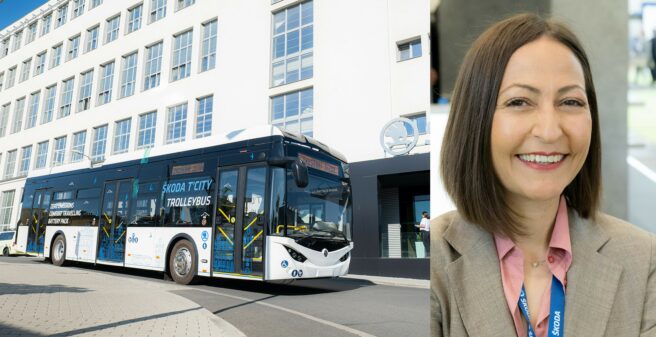
Interview with Tanya Altmann, CEO of Škoda Transportation in Germany
UTM: Ms Altmann, you have been with the Škoda Group for over a year now. What are your impressions and what do you enjoy most about your role as CEO?
Tanya Altmann: My motto as a pragmatic person is: “Define solutions together and then do things at high speed!” I have always worked for very large companies, where decisions are usually not always made so quickly. Therefore, it is even more important to empower employees to make decisions, that deadlines are clearly communicated and also met. After my last job as CEO, I reoriented myself, both in terms of the company and the orientation towards sustainable mobility and its implementation. I want to be involved in shaping this important process myself and not just stand on the sidelines criticising.
I can do that very well in the Škoda Group, because flexibility, dynamics, the technology as well as the experience of the company have excited me from the very beginning. A high level of investment in the development of new technologies such as the new hydrogen bus and the commitment of our shareholder, the PPF Group, have also convinced me as an engineer. With our new, future-oriented product portfolio, we can offer everything that modern cities need. Moreover, it is always exciting to work as a woman in an industry that is mainly dominated by men.
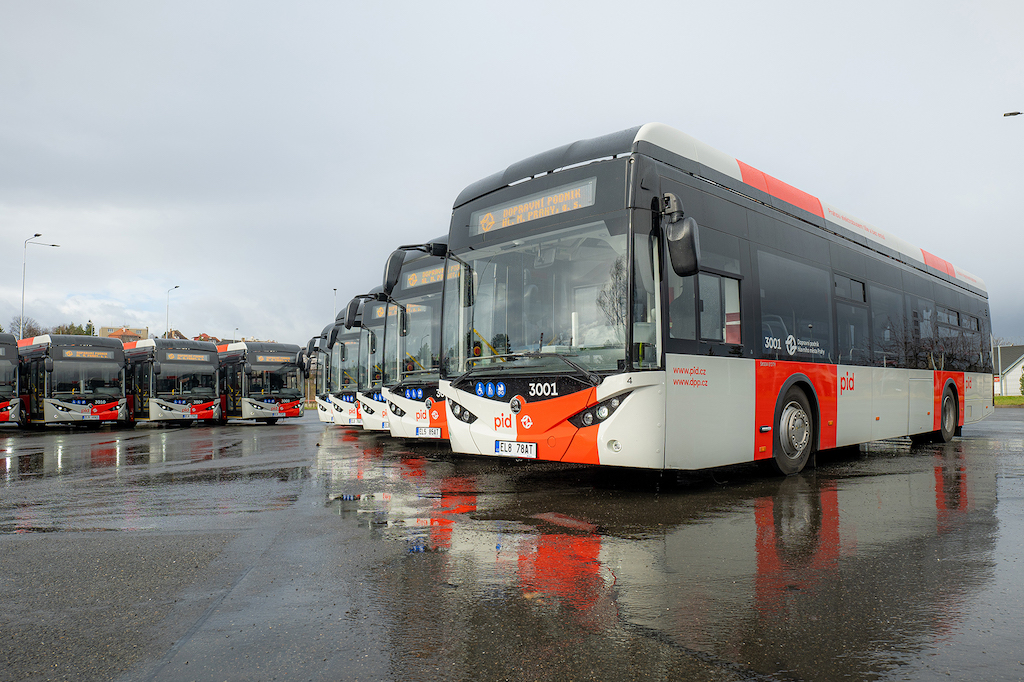
UTM: How is Škoda Transportation positioned in the German-speaking market? How many employees work here?
Tanya Altmann: We have an office in Mannheim together with our Rail team. This allows us to generate synergies, e.g. in the area of service, such as joint storage and logistics solutions for spare parts. Decentralised working with flexible workplaces allows us to design our projects as agilely as possible. This means that our employees can be productive and exchange ideas in the office in Mannheim, on their regular trips to the headquarters in Pilsen in the open-plan office or even from home. We currently have about 30 employees in Germany and are in the process of recruiting more professionals to join our team. Of course, we are always open to applications from motivated people, whether experts or students, because you can never have enough committed employees. In the next few years, we will also open another office in Germany, only it is not yet decided where.
UTM: We would like to talk to you about how you see the current situation and the foreseeable future of the European city bus market. Do the current economic and geopolitical situation, inflation, price developments affect the market for buses and public transport vehicles?
Tanya Altmann: The energy crisis and climate change are clearly felt by all of us and they present us with completely new challenges. Additionally the corona pandemic, supply chain problems and all the geopolitical issues were all unimaginable a few years ago. However I also see that some things are moving in the right direction. For example, the Clean Vehicle Directive, which came into force exactly one year ago in the various countries of the European Union, is a good sign for the future. At the moment, the Clean Vehicle Directive mainly concerns the city sector, i.e. public transport, and if we want to achieve our climate protection goals, that is not enough. Especially in these times, an OEM can of course not achieve the desired goals alone. We are already in talks with various companies, because this feat of strength must be achieved by everyone together. The energy companies, the politicians, the industry, all united. And that is the cooperation I would like to see in the future. If we want to make it, we have to work hand in hand and develop solutions together.
UTM: Until now, Škoda Transportation has been able to hold its own in the German-speaking countries mainly in the tram market. What is your role as president for the bus sector and what strategy is Škoda pursuing in Germany and the German-speaking countries?
Tanya Altmann: I am responsible for building up the market in the DACH region as well as in other European regions and making Škoda bus products known there. To place their advantages in such a way that we also become successful in Germany, Austria and Switzerland in the future. A special feature of Škoda is that we deliver our trolleybuses with batteries for non-electrified routes. We also apply our 86 years of experience with trolleybus technology to our electric buses. We are also well positioned for the future in alternative drive systems. We are pleased to have a future-oriented product portfolio with green and new products. However it is much more important to us that we continue to develop the buses that are currently on the market. For example, we are currently expanding the 2-pole chargers to a 4-pole version (fast chargers) and are also in negotiations with some service workshops.
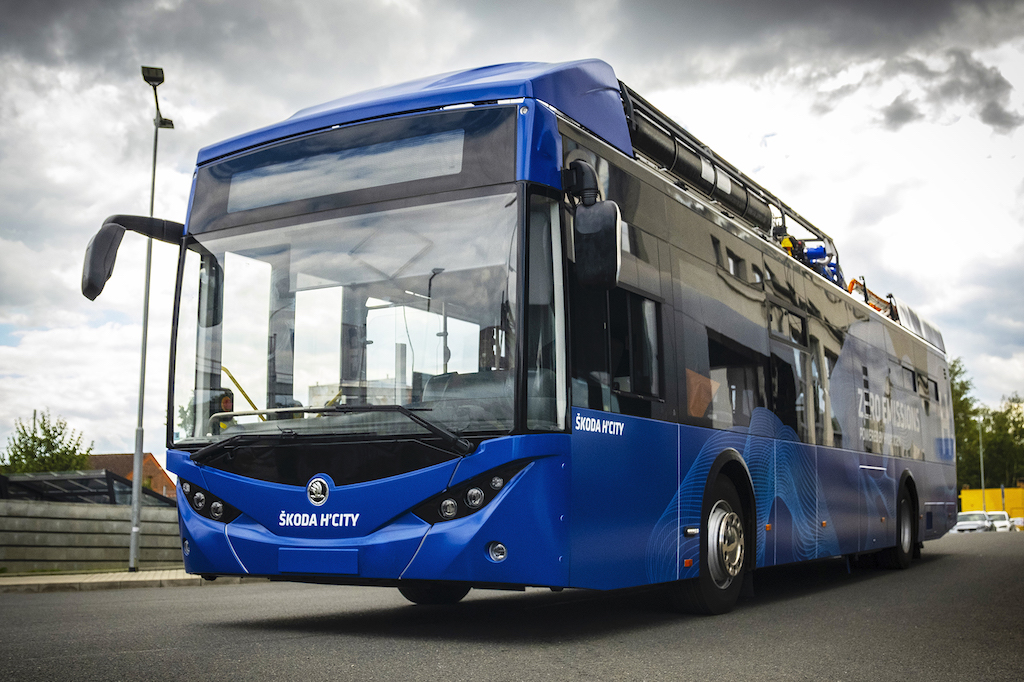
UTM: Škoda Transportation has developed the E’City electric bus platform together with Temsa and both companies belong to the PPF Group: How do both companies (Škoda and Temsa) work together, what synergies or even overlaps are there?
Tanya Altmann: In Germany, our sister brand Temsa and we have aligned ourselves in the market with a clear focus on the respective strengths in our customer segments. Škoda sells city buses in German-speaking countries and Temsa will continue to sell coaches here. By doing so, there will be no overlap of the two brands in the market. Our first joint project was the E’CITY 12, which we already presented at the Bus2Bus fair in Berlin in April.
At the upcoming InnoTrans we will present our new T`CITY 12 and, as a highlight, the new hydrogen bus H`CITY 12 for the first time. Temsa has developed a new, uniform body for these three buses as a platform solution especially for us. The complete electrical equipment, including batteries and current collectors, comes from us. The entire assembly and complete testing of the buses will be carried out in our factory in Pilsen. This platform solution enables us to provide our customers with an optimal offer in the area of service, provision of spare parts and maintenance.
UTM: Škoda also wants to enter the e-bus market in the German-speaking countries. How do you see your chances and how do you want to convince customers of your product, the E’City?
Tanya Altmann: As already mentioned, we are very proud of our new E`CITY 12, as we can use the existing tram or overhead line infrastructure in cities for the charging process. The customer who already has this infrastructure can thus make a quick transformation to electric mobility without high investment costs or lengthy applications for infrastructure construction. The special feature of the E`CITY 12 is that its drive battery can be recharged again and again during operation via a pantograph from the existing infrastructure. This gives the customer the flexibility to define the charging stations optimally and in line with the timetable. Electric buses equipped with this type of charging have a greater daily range and in addition the battery can be kept small and light. We offer both normal charging with the 2-pole and the fast-charger version with the 4-pole pantograph. For cities without overhead line infrastructure, we can offer e-buses with different charging options such as Overnight or OppCharge as well as our new H`CITY 12 hydrogen bus.
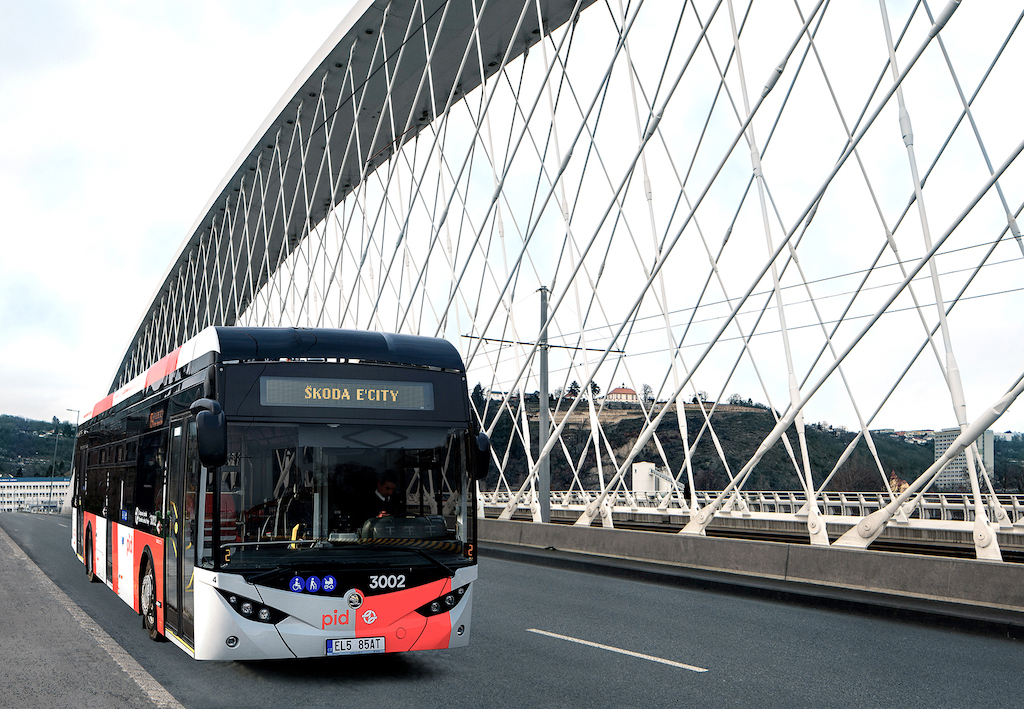
UTM: Are you focusing exclusively on battery and trolley buses? Will Škoda also enter other technologies in the future, for example hydrogen?
Tanya Altmann: Hydrogen buses are a subject close to my heart. At InnoTrans in the Bus Display, we will present our new hydrogen bus for the first time in Germany and also hold a press conference there on 22 September. The ŠKODA H’CITY 12 is a new hydrogen bus that uses PEM fuel cells and batteries as its power source. Its range is up to 350 kilometres and the fuel can be quickly refilled. As part of the ŠKODA “New-Energy-Vehicles”, it is the solution for emission-free cities of tomorrow. Sustainability is firmly anchored in our DNA, which is why we have always followed the path of ecological and sustainable transport in the Škoda Group and see ourselves very well positioned in alternative drives.
UTM: Is there already demand for the new Trolleybus T’City? If so, which operators are they?
Tanya Altmann: Our ŠKODA T’CITY 12 is a 100% low-floor trolleybus manufactured with a new body specially developed for Škoda. These new trolleybuses are an ideal continuation of Škoda’s 86-year tradition in this field and have also already been sold to a first customer. There are already enquiries in Germany as well. In addition, we offer improvements for already delivered trolleybuses that have a positive effect on the energy balance. For example, an upgrade with a new, lighter battery with the same capacity, or for older trolleybuses with diesel generators, a conversion to battery technology.
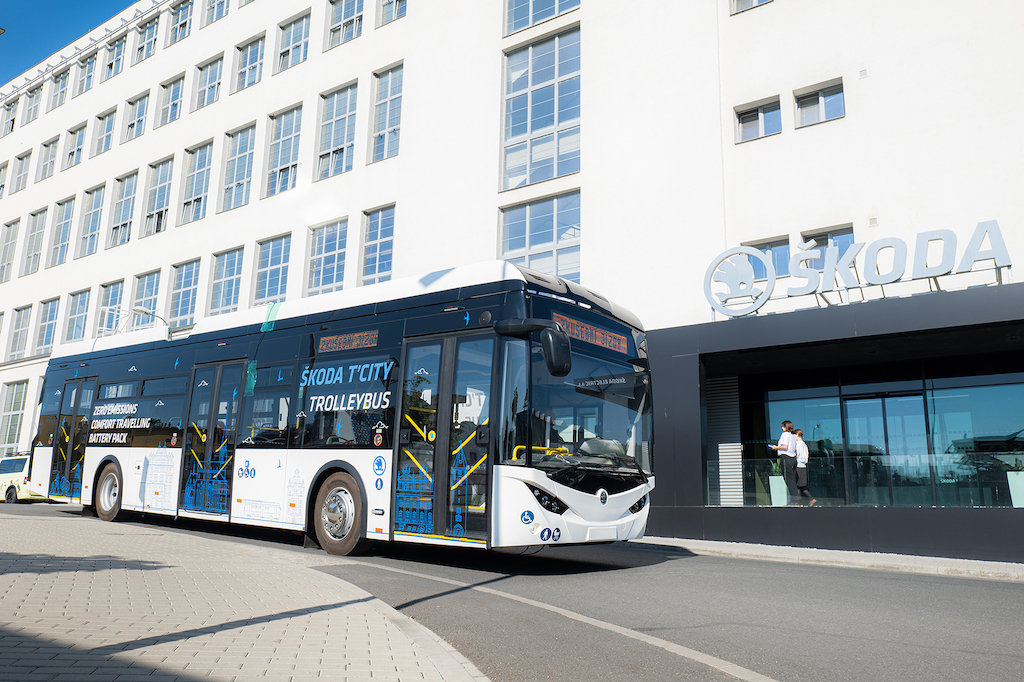
UTM: Are there plans to develop an articulated version of the T’City and E’City as well?
Tanya Altmann: Yes, both buses are already in development as an 18-metre version and are also part of our product brochure.
UTM: According to our information, the Škoda electric bus – with the exception of the drive – will be built by the “sister company” Temsa in Adana (Turkey) and then completed with the electric drive in Pilsen. How does the bus get from Adana to Pilsen? It can’t be transported on its own wheels because it doesn’t have a drive.
Tanya Altmann: Special haulage companies are used for such transports. Temsa produces the bodywork in Turkey and Škoda supplies all the electrical equipment, including batteries and current collectors. The entire assembly and testing of the buses is also carried out at our plant in Pilsen.
UTM: At the beginning of June, organisational changes were made to the Škoda Group. What are the reasons for this and what impact does this have on product development?
Tanya Altmann: The Škoda Group aims to move closer to its customers by simplifying and streamlining corporate processes and is striving to expand into new markets. One of the most important changes in the group is the division into individual regions and product lines. The new structure makes it possible to address customer needs individually, as teams have a better understanding of their region and are able to develop appropriate solutions and offerings. Furthermore, there will be some centrally controlled functions for more efficiency.
UTM: One last question: We are also hearing that the name Škoda will be removed from the company name in a few years. Can you please explain the reasons for this? Are there already ideas for a new name?
Tanya Altmann: There is no connection between Skoda Transportation and Skoda Auto or the VW Group. I am always asked whether we also produce cars. No, we focus on public transport, i.e. trains, trams, metros, buses, the drive systems and of course the associated services. Digitalisation also plays an important role in our portfolio. We have already mentioned all the reasons for the sale of the brand in our press release and they have not changed.
“We remain proud ambassadors of the legacy of Emil Škoda, who paved the way to success for the industry in Pilsen and throughout the Czech Republic. However, it is time to acknowledge reality and settle the long-standing disputes over the scope of rights that have arisen as a result of completely different products being marketed under the same brand. I am confident that the final agreement we have reached will help Pilsen-based Škoda to realise its vision as a company that offers comprehensive solutions for modern mobility alongside a range of vehicles for public transport.”
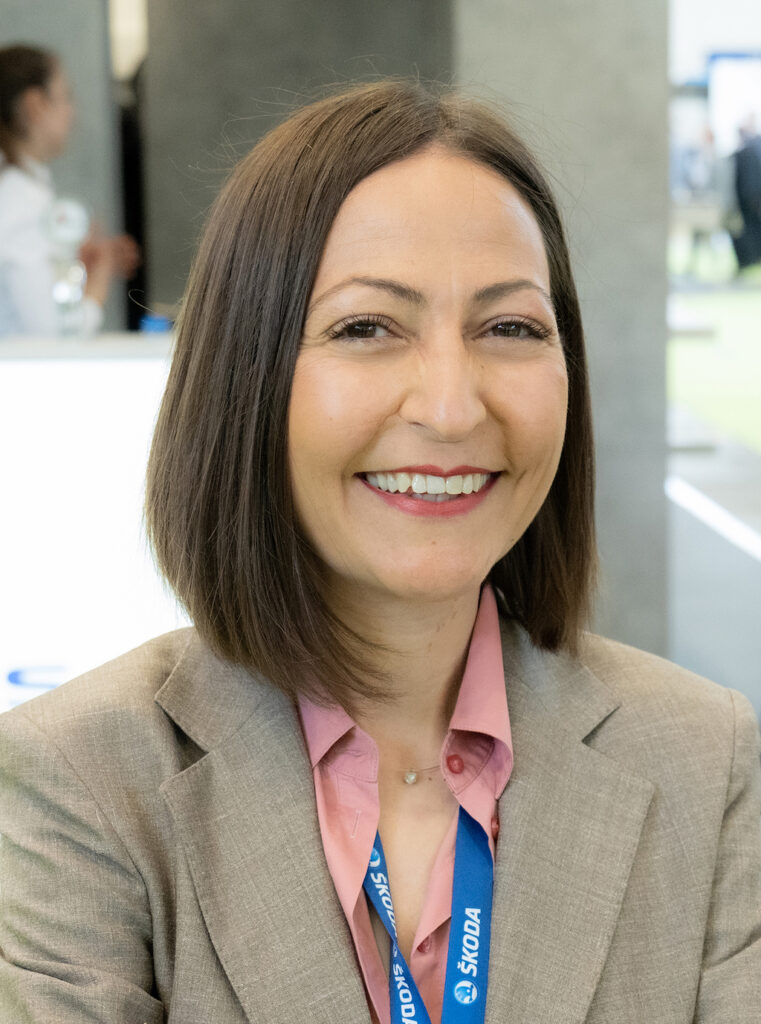
Tanya Altmann, President Bus Mobility, ŠkodaTransportation Group
Ms Altmann holds a degree in mechanical engineering for aerospace technology. She graduated from the Technical University of Braunschweig.
She started her professional career at Airbus Military in the A400 M programme in project management and financial controlling. Afterwards, Ms Altmann worked for Alstom Transportation in different areas mainly in technical and commercial project management. As Bid Management Leader for a German EMU contract, with an order volume of ~270 Mio €, she was already responsible for the project from acquisition to delivery.
During her next station as Project and Service Director at GE Power Conversion and later as CEO at GE Power Conversion for the CEER regions, she gained further experience in various sectors such as energy, renewable energies, steel construction, mining, marine and automotive. Subsequently, she served as Board Director at ELIRE Group in the Future Mobility / Smart Mobility division.
Currently, Ms Altmann holds the position of President Bus Mobility at the Škoda Group and is also CEO of Škoda Transportation Deutschland GmbH. Her responsibilities include market development in the DACH region as well as in other European countries and the expansion of the product range for buses with alternative drives, infrastructure and charging solutions. She has also set up a Škoda women’s network.
16.09.2022
